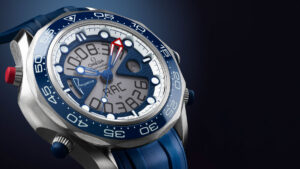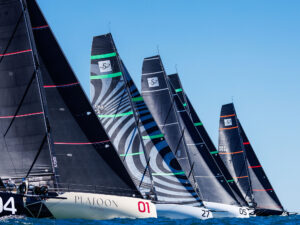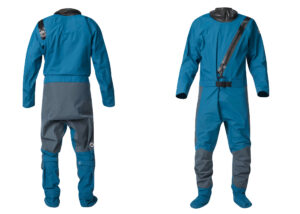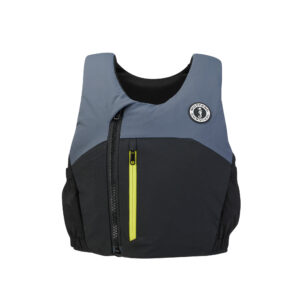There is no survival tool older or more utilitarian than a knife. Prehistoric man survived thanks to crude versions of them, pirates used and abused them, and today dinghy sailors to professional ocean racers are required to carry them. So, you’ll likely need a sailing knife this season, if you don’t have one already. Search the Internet and you’ll discover plenty of makes and models, but the challenge in selecting one for personal use is that there’s no such thing as the perfect knife. Selecting the most appropriate knife comes down to individual choice, environment, type of boat, and your expected use.
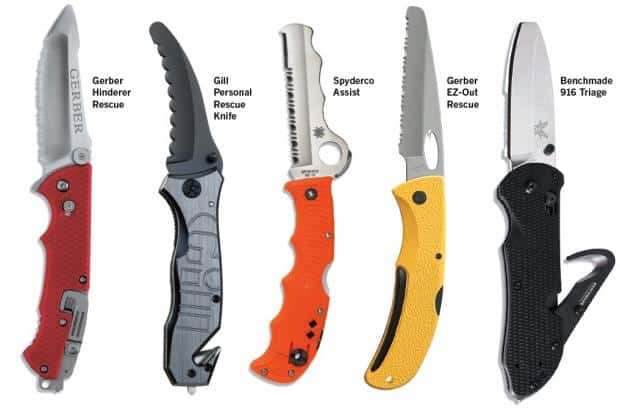
The requirement of a cockpit sailing knife has always existed for most offshore and inshore races sailed under the ISAF Special Regulations. Regulations usually require a knife to be kept in the boat’s safety grab bag as well. These rules mandate the on-deck knife be accessible, secure in its scabbard, and made of a quality steel alloy that can withstand environmental abuse. In 2011, however, several studies conducted following two high-profile accidents each recommended all sailors carry a personal knife. Consequently, the 2012 Mackinac [Race] Safety Requirements (MSR), used for the Chicago-Mac and Bayview-Mac races now require every crewmember to carry a knife while on deck, and always readily available (i.e., on the outside of your gear or PFD). None of the regulations, however, require a specific type of knife.
There are three primary types of knives applicable for sailing—the folding-blade style, the straight-blade style, and the emergency cutter. Blade sharpness is obviously the key consideration with all three types. Wear-ability is next. Consider whether it can be worn safely all the time, yet readily available. A knife’s functionality is defined by its intended use: Do you need a pointed 5-inch razor-sharp blade or a multipurpose blade that’s safer to handle in extreme conditions?
In terms of blade construction, steel quality and type is the most important variable. Most modern blades are steel alloys, primarily iron alloyed with different unique elements (i.e., carbon for strength or chromium for corrosion resistance). For the short-blade knives that are recommended for racing sailors, a harder rather than softer alloy is better because it will be more resistant to wear, and thus require less frequent sharpening. Many knives are treated with different elements or polish techniques that can improve strength and/or corrosion resistance, and the complexity of treatments ultimately dictates the knife’s price.
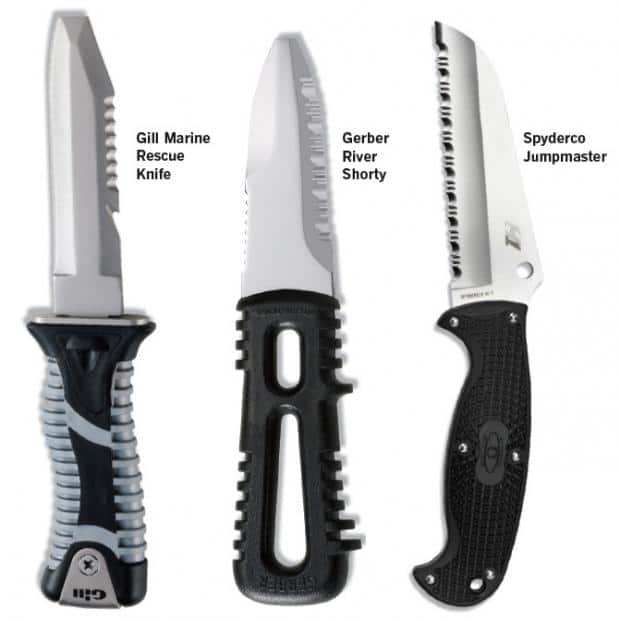
A serrated sailing knife has a blade edge that acts like saw teeth when cutting. This makes it very effective for ripping through tough materials such as high-tech rope or a nylon tether. Many knives have a blade with serration along the throat-half of the blade while the tip portion is straight edge, which makes for a more effective swipe or cut. Note that sharpening a serrated knife involves a special sharpener and a lot more time, as you need to sharpen each serration individually.
Blunt-tip knives are intended to make a knife “safer” to handle. A pointed tip is a potential hazard in rough conditions, and is not ideal for youth sailors for obvious reasons. A blunt tip makes most sense if you expect to have the knife at hand by yourself or others, or around materials you don’t want to cut—like an inflatable PFD or sail.
One-handed operation of a folding knife, combined with innovative lock mechanisms to keep the blade open, is an essential feature, especially when you need one hand to steady yourself on the boat, up the rig, or in the water. There are many brands and models from which to choose, but the key thing to look for is how you can attach it to your gear: a belt attachment, a sturdy clip or eye, or all three. A lanyard is essential.
Where to carry a knife outside your gear or in a pocket should be considered as well because it will make a difference. In other words, if you intend to put it in your spray-top or pants pocket, make sure it fits and you can extract it rapidly. If you intend to clip it to your belt, make sure it can’t pop off when you sit.
Also, imagine the following scenarios when considering where you’ll attach it: Which hand will you favor to grab or open it? How will your sailing gloves affect one-handed operation? Will you be using it in the dark or underwater, which would require a brighter, more visible handle? How easily does it store and come out of its sheath?
Blade length is not critical for common sailing applications, but it’s important. Most folding knives have blades around 3 inches. Most straight blades are usually 1 to 2 inches longer. The longer the blade, the easier it will be to cut something, because length allows more effective sawing.
The handle is also worth considering: make sure it fits your grip, and the one-handed operation (thumb placement) is quick and feels natural to you, and that it folds without too much effort.
If you want a personal knife for safety that will also be your all-purpose knife, a folding-blade knife is obviously the ideal choice. For a durable knife that will last a lifetime with regular care, expect to spend around $150, but there are plenty of knives for less than $100 that are perfectly suited for sailboat racing. If you choose a strictly serrated blade, it’s probably best to keep it for safety, not regular use. In this range, you’ll find many knives popular among sailors, including knives from such manufacturers as Benchmade, Wichard, Spyderco, Boye, Gill, and Gerber. Most chandleries and online marine stores stock a variety, but the only true way to meet your personal fit for one-handed opening is to try one before you buy it. Once you buy one, learn how to use it.
The straight-blade knife is an ideal cockpit- or boom vang-mounted knife. Having a blunt tip and/or full-length serration will reduce the risk of accidental cuts and injuries. There are many lock-and-fit mechanisms and knife/sheath combinations. The Gill Rescue Knife (around $26) or the Gerber River Shorty ($34) each have a blunt-style tip and are a good place to start.
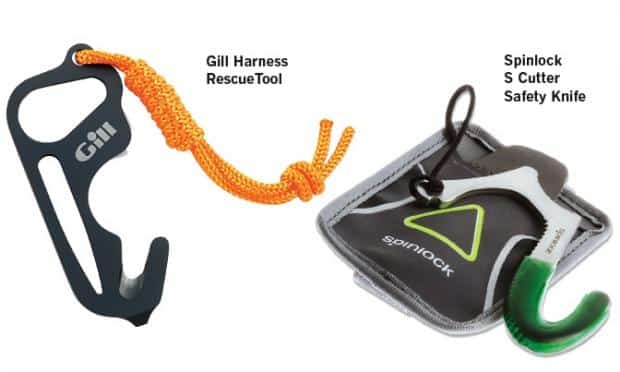
Emergency cutters come in many shapes and sizes. It is not intended as an everyday utility knife. You may never have to use one, but don’t let that influence its importance. It’s an inexpensive tool that you can permanently attach to your PFD. Plastic cutters with a stainless blade can be found for $10; Aluminum cutters are only slightly more expensive. Gill’s Harness Rescue Tool and Spinlock’s S Cutter were purpose-designed for sailing, come with pouches, and are less than $40. Benchmade, which has a plethora of choices in many different alloys and coatings, has offerings in the $30 to $50 range. Climbers, divers, hunters, and emergency responders all use emergency cutters so there are many options available, and even kiteboard equipment manufacturers have perfectly suitable offerings.

